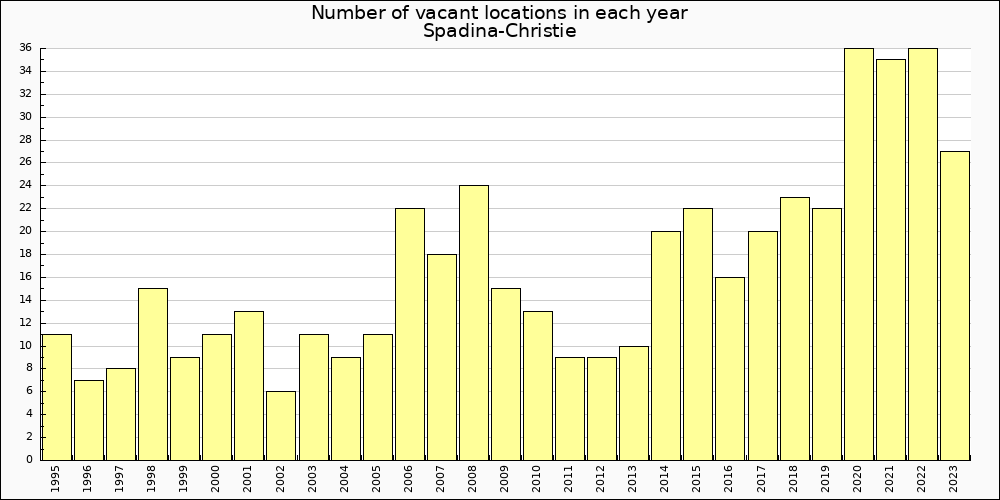Here are a few highlights of the trends revealed by my annual survey of the street-level businesses on Bloor Street in Toronto between Spadina and Christie. (I do not yet have enough data for the Christie-Lansdowne sector to discern any trentds.) (You can explore the data yourself on this page.)
Some notable changes in the composition of the businesses on the strip between 1995 and 2024:
- the percentage of businesses selling prepared food (restaurants, cafés) and personal care (hairdressers, spas, nail salons) increased substantially
- the percentage of businesses selling fresh food, clothing, home furnishing (furniture, beds, futons, kitchen equipment, home decoration, cushions, candles), art, literature, and music (art supplies, photo finishing, books, records, CDs), and travel products decreased substantially
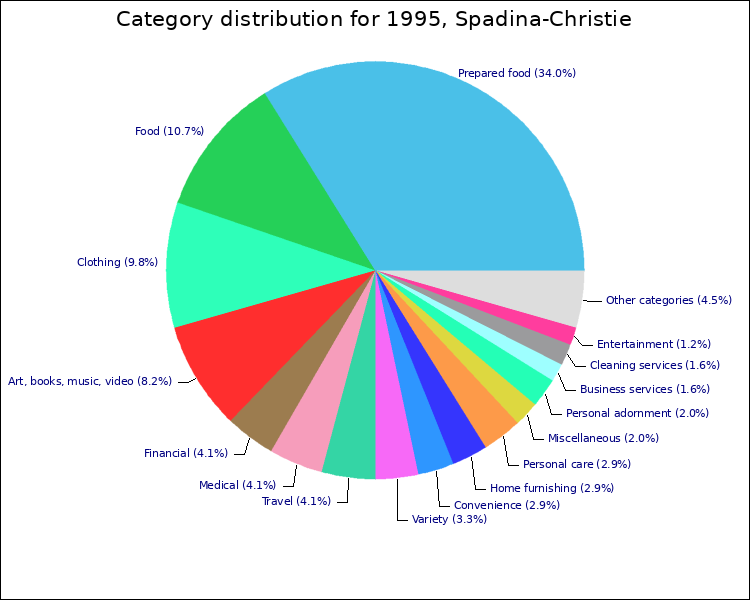
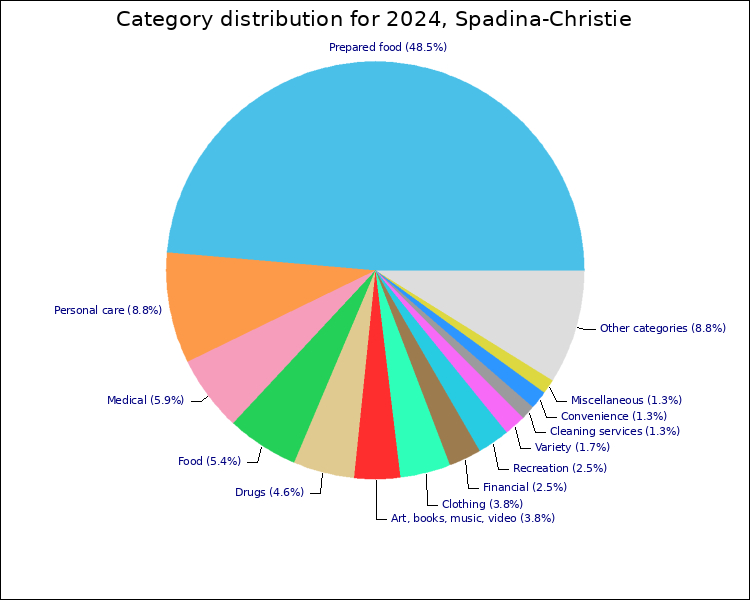
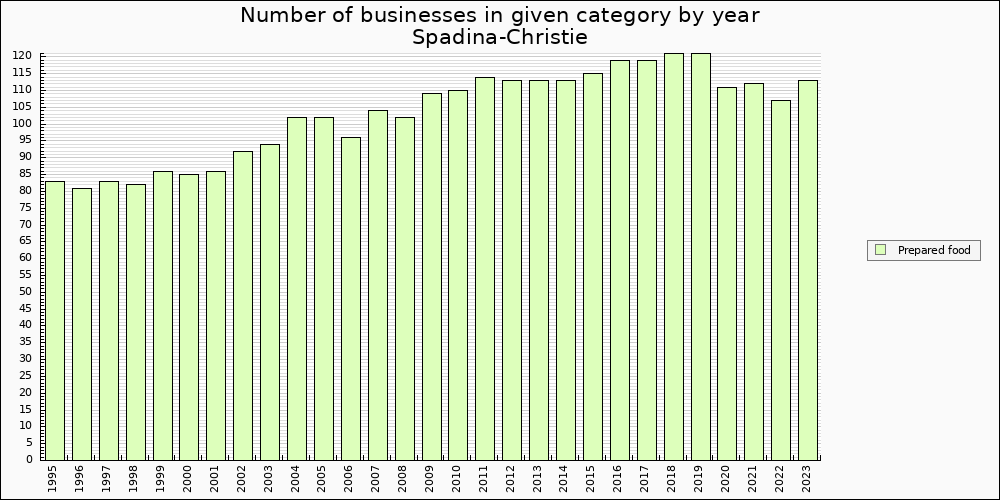
The number selling personal care items and services increased steadily from 2000 to 2013, and has leveled off since.
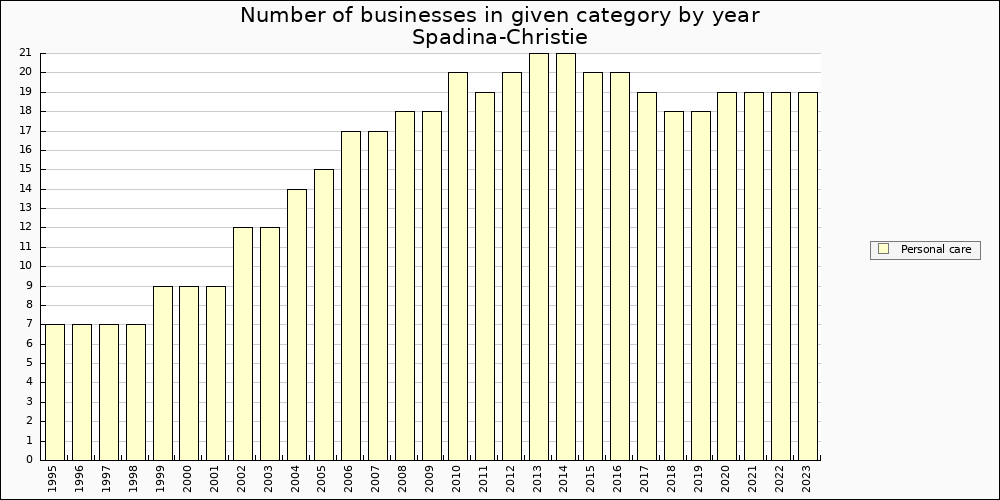

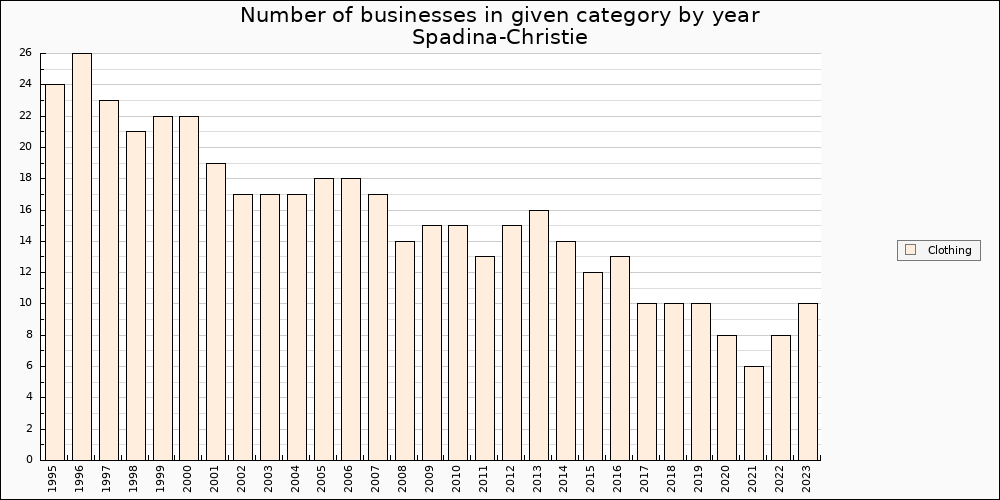
Businesses selling prepared food are mainly restaurants, cafés, and establishments I classify as purveyors of "fast food". The number of restaurants has been on a broadly upward trend, while the number of cafés has fluctuated. The number of fast food outlets has been fairly steady, with a decline in recent years.
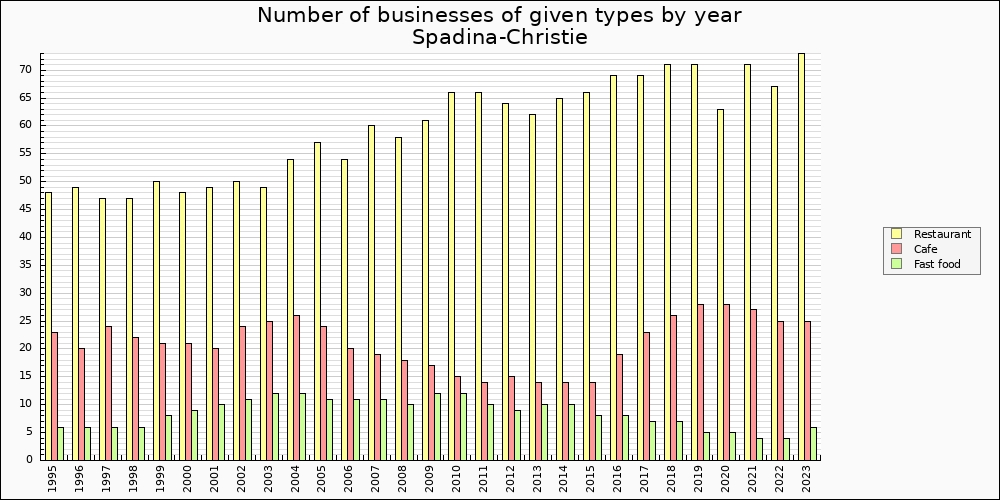
Among restaurants, the number serving Japanese food increased a lot up to 2015 and has declined a bit since then, while the number of Korean restaurants peaked in 2008.
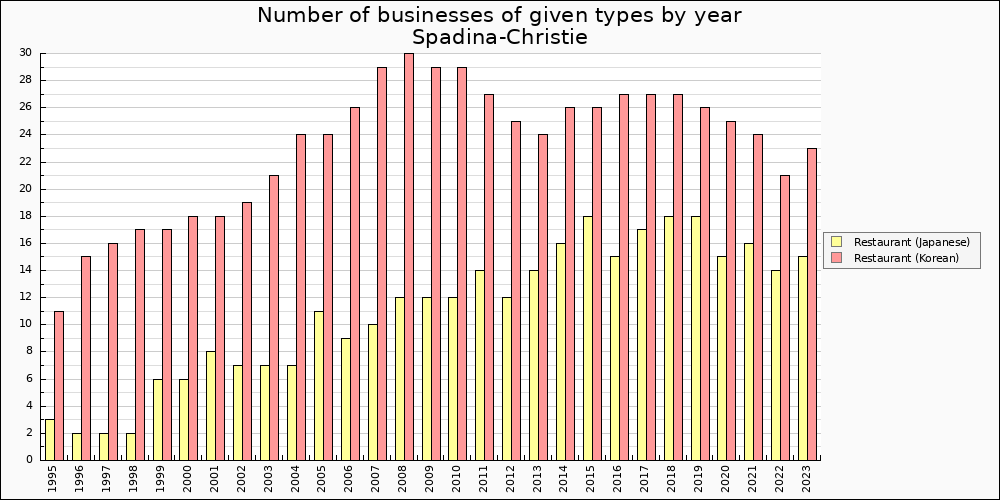
Meanwhile, Indian and Italian restaurants had disappeared in 2016, but since 2019 Indian restaurants have had a renaissance.
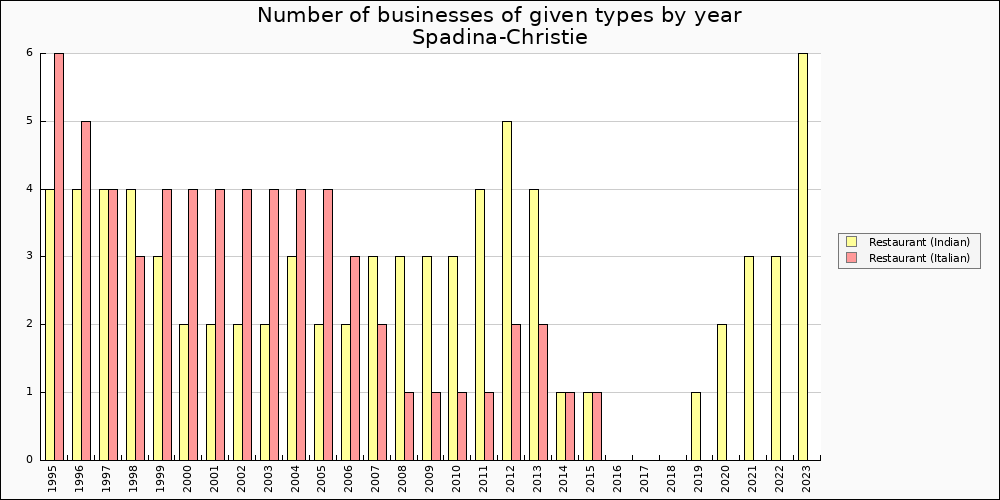
Many restaurants do not last long. The next chart shows, for each year since 1995, the number operating in 1995 that survived until that year (the blue bars), and also the survival of the ones that opened in subsequent years. For example, of the 48 restaurants operating in 1995, 39 remained in 1996, 34 in 1997, and only 5 in 2024 (Imonay Korean Restaurant, By the Way Café, Korean Village Restaurant, Korea House Restaurant, and Tacos El Asador). Of the 10 new restaurants observed in 1996, 5 survived until 1997, and all of these were out of business in 2017.
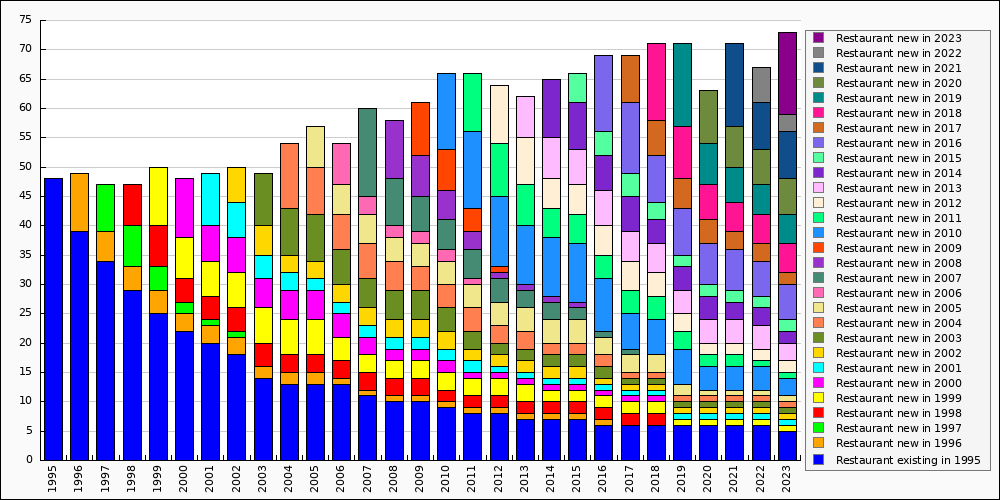
Many cafés do not last long either, but the total number of them varies more year-to-year than does the total number of restaurants.
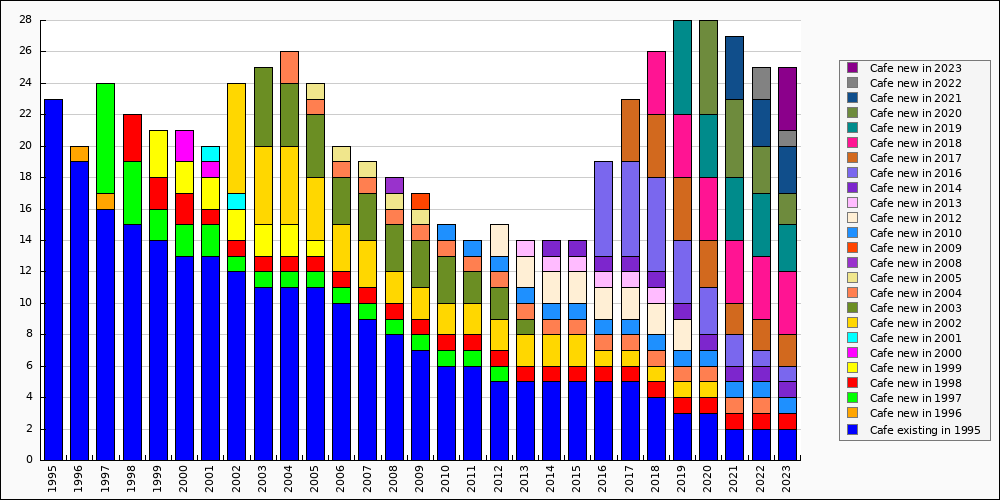
A distinctive feature of the stretch of Bloor Street between Bathurst and Christie is the large number of businesses catering to speakers of Korean. I put a business in this category if it has significant signage in Korean. ("Significant" is subjective. I try to be consistent.) The number of businesses in this category grew substantially from 1995 to 2005, and has steadily fallen since then, from a peak of 74 to 39 in 2024. In the late 1990s, a significant number of businesses also catered to speakers of Spanish, but since then that number has steadily dwindled.

In every year, some stores are vacant. Not surprisingly, perhaps, the number of vacancies peaked during the 2007–2008 financial crisis (although the number was high in 2006, before the crisis). Between 2020 and 2022 the number was high, but since then it has declined significantly. (The numbers from 2017 to 2023 include five spaces vacant because of the pending redevelopment of Mirvish Village, including the block previously occupied by Honest Ed's. In 2024, one space in the block previously occupied by Honest Ed's was occupied.)
